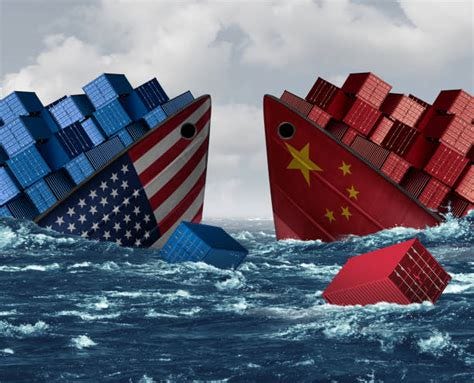From Tariffs to Blackouts: A Playbook for Business Continuity Driven Growth
“An asteroid is coming.” — Ryan Petersen, Flexport CEO
Since Washington floated 145% duties on Chinese imports, Flexport’s data show a 60% collapse in China-to-U.S. bookings: a hit Petersen says could “wipe out 80% of small importers.” Apollo Global Management’s April dashboard echoes the stress with the sharpest earnings downgrades since 2020 and inventories ballooning as firms rush to beat the tariff clock. Yet tariffs are only one fault line: a 10-hour power-grid fire at Heathrow stranded 100,000 passengers, and last week’s Iberian blackout slashed in-store card transactions by 42%, costing roughly €400 million. Add a surge in state-linked ransomware, and the takeaway is clear—grey swans are circling from every direction.
Why keep reading?
Because these shocks are also invitations to grab market share, raise prices on reliability, and road-test new supply options before slower rivals react.
1 │ Grey-Swan Stresses: Defensive vs. Offensive Angles
Every disruption carries both a protective task and a chance to out-maneuver competitors.
Tariff shock
Defensive: protect margin.
Offensive: lock scarce capacity while rivals scramble.
Infrastructure outage (fires, blackouts)
Defensive: restore operations fast.
Offensive: market uptime at a premium.
Cyber hit on a key supplier
Defensive: contain contagion.
Offensive: on-board competitor’s stranded customers during downtime.
2 │ First-Principles Audit: Know Your Levers Before You Act
This five-question scan exposes where action actually matters for your P&L and ecosystem. The questions that follow use tariffs as the live fire drill, but the same thinking works for power outages or cyber hits.
Cost elasticity – Which inputs are tariff-sensitive, and how far can you raise price before demand snaps?
Alternate capacity – Do you already buy even 5% from a second geography? That “reservation” order is a cheap call option.
Liquidity headroom – Can you fund 90 days of fixed costs if revenue falls 30%?
Customer trip wires – Are duty-indexed price clauses pre-agreed, or will you negotiate in crisis mode?
Ecosystem readiness – Do 3PLs, SaaS vendors, and lenders share your thresholds—or will their limits pinch first?
3 │ Three Risk Tracks to Frame Your Response
Scenario planning isn’t prediction; it’s pre-committing moves so teams act decisively when thresholds break. Swap “container flow” for “grid uptime” or “network availability” and the logic holds.
Base Case
• Flow/service impact ≈ –15% • Duty/strain ≈ 25%
• Posture: tighten slack; test pricing limits.
• So what? Use the breathing room to cut easy waste before conditions worsen.
Spike
• Flow/service impact ≈ –40% • Duty/strain ≈ 60%
• Posture: shift ~30% of volume to near-shore suppliers; convert fixed costs to usage-based fees.
• So what? Early movers lock capacity and conserve cash while rivals debate.
Break-Glass
• Flow/service impact ≈ –80% or full halt • Duty/strain = 100% / bans
• Posture: finish semi-knocked-down kits in-market; mothball low-value SKUs; consider exits or opportunistic M&A.
• So what? Decide now what you would cut, or buy, before panic discounts vanish.
Tip: tie each track to a trip-wire metric (landed-cost index, grid uptime %, daily cash). When the trigger hits, you act—no board-room firefight.
4 │ Option-Value Plays (80/20 Prompts, Not Prescriptions)
Focus on moves that buy maximum flexibility per dollar: “cheap options” over sweeping restructures. Each tactic below is illustrated with tariff examples, yet the logic translates to any shock that inflates costs or stalls supply.
Reserve micro-capacity in Mexico, Vietnam, or domestic suppliers (5 % standing orders).
Modularize products so only semi-finished kits cross borders; duties apply to parts, not finished goods.
“Variable-ize” overheads—usage-based SaaS, revenue-share 3PL contracts, success-fee agencies.
Pool freight & policy clout via an SMB consortium; size secures loading windows and lobbying power.
Price what you can’t control: turn uncontrollable swings (duties, fuel, FX) into explicit contract terms:
• Duty-escalator clauses triggered by tariff bands.
• Volatility surcharges tied to public indices.
• Hedge/insurance premiums passed through as cost-plus lines.Power-proof the last mile: lease standby generators and ensure POS systems default to offline-mode cash acceptance.
Market reliability: tell prospects, “We stayed stocked during the blackout; your current vendor didn’t.”
5 │ WOOP—Cascading Strategy Without a 90-Slide Deck
High-level plans fail if they never reach the front line; WOOP’s four lines make strategy actionable. The WOOP sample references tariff triggers simply for clarity—swap in grid-down or ransomware scenarios and the framework holds.
Wish: Maintain 95% fulfillment across shocks.
Outcome: Lost-sales < 5%; cash runway > 90 days.
Obstacle: Landed cost +45%; grid outage > 12 hrs.
Plan: If duty tops 30% or power drops > 4 hrs, then divert 30% orders to near-shore vendors, spin up generators, and auto-notify customers (owner: COO).
6 │ Five Upsides That Make Resilience Profitable
Continuity spending can pay off like a high-return investment when shocks hit and even when they don’t.
Premium pricing on reliability.
Process innovation via 80/20 focus.
Employee engagement through cross-training.
Cheaper capital from lenders who prize resilience.
M&A optionality: distressed rivals are bargains when you hold cash and capacity.
Business continuity, done right, is a profit center masquerading as insurance.
Call to Action
Hold a one-hour scenario huddle this week—invite a key supplier and your finance lead.
Answer the five audit questions and turn gaps into action items.
Pilot one option-value play: capacity, cost, or customer communication before June.
Control what you can, price what you can’t, and move before the crowd. Grey-swan turbulence isn’t ending, but the upside for prepared SMBs has never been brighter.
About AG Next LLC
AG Next LLC (www.agnextllc.com) is a boutique consultancy dedicated to helping SMBs achieve commercial success through fractional leadership and strategic advisory services.
Our philosophy centers on the belief that agility and growth are critical drivers of success, enabling businesses to innovate, adapt, and expand in a rapidly changing marketplace.
Through our network of proven fractional executives and experienced advisors, we provide SMBs with the leadership and expertise needed to navigate complexity, execute with confidence, and achieve sustainable growth.
Ready to Unlock Your Business's Potential?
Discover how our network of Trusted Fractional Leaders can drive growth and transformation for your business—email us at info@agnextllc.com to learn more.
The right leadership at the right time can make all the difference.



